- Home
- Anne Spackman
Star Gods: Book Four of Seeds of a Fallen Empire Page 13
Star Gods: Book Four of Seeds of a Fallen Empire Read online
Page 13
Alessia looked. “Gorgeous view,” she agreed. “I came in to let you know that the lardaks are doing fine, now that I have fed them. Your babies are waiting for a visit.”
Kellar laughed. He had been taking care of some of the baby lardaks for a while. It had all started when, shortly after the departure of Selesta from the planet Seynorynael, Kellar had been trying to revive some of the livestock they had brought on board that had been affected by the space warp. The lardaks were ok, but had been penned next to a species of minan-nai that were vocal and clearly in pain.
Then Alessia had become involved. Alessia had been on hand in the nearby ninety-first level botanical gardens and by now everyone knew she’d come to help him when she heard the loud cries of the injured and scared animals.
Both of them tried to show as much compassion and kindness as they could towards the suffering creatures—a few had been euthanized out of mercy, while others were calmed with tranquillizers. Kellar had been rather friendly to Alessia since that day.
“Glad to hear that they’re ok. They love feeding time. I’ll check up on them as soon as I can.” Kellar said. “Some of the babies will need human affection to stay sane, petting, and reassurance.”
Maesan Kellar was confident and a bit headstrong; he had trained as an aerodynamics engineer. His friendship with Kiel went back to their training years together under Captain Ungarn.
“Alessia,” Kiel called; he had been listening to the interchange.
“I never saw the lardaks.” Kiel interrupted. “What are they like?”
“Oh,” Kellar shrugged. “Well they are gentle creatures—herbivores, small, and with cloven, hoofed feet. The babies are friendly and cry a lot.”
“Are they rare, as I’ve never heard of them,” Kiel added. Kellar said nothing.
“They are.” Alessia answered. “But their species tolerates space flight better than some, so we got as many as we could from every corner of Seynorynael. They were expensive. The meat is a delicacy that costs many thousands of fistari. I’m glad you asked me about this. Most of us just accepted the many species of livestock and didn’t know why we had what we did. Gerryls informed me of this, actually.”
“Tell him to visit the bridge next time you see him. I’d like him to telepathically ‘show me’ what he knows about the rest of the livestock species on board.”
“I’ll tell him.” Alessia said quickly.
* * * * *
Two months later, the Selesta encountered a runaway star entering the Tarkhan system. Kiel proposed to isolate the star in an artificially created gravitational field and stabilize it below the solar plane. As it turned out, Kiel’s idea saved the colonies of the fourth planet from a collision they had not prepared for. The Tarkhans welcomed their saviors and considered the offer of joining a galactic Federation. This was the first group of aliens that Hinev’s explorers brought under the Federation’s wing.
Selesta had warped beyond the influence of Hinev and the first generation of major explorers, and the Tarkhans, whose level of technology fell far short of those of other member races in the Federation, had never left their own solar system. Nonetheless, Kiel and the others were fascinated by their culture, which maintained a balance between nature and technological progress and emphasized the responsible use of raw materials. They were generally a moral race with good values.
Tarkhan society was a hard-working conglomeration of sub-cultures, who used a system of free trade similar to that found on Tulor. And like Tulor, the Tarkhans had experienced war, but they had successfully kept the peace for more than five generations. They were not a highly advanced race, but still in the beginning stages of a technological revolution.
The Tarkhans were bipeds but not true humanoids. Their skin was a light, leathery grey with splotches of white hair concentrated on the face and feet. The Tarkhans' ears were small like Seynorynaelians, their noses small with one tiny nostril, and they had clear, wide blue-grey eyes, narrow faces and long legs.
The climate of Tarkhan was slightly cold most of the year, though not as extremely cold as Seynorynael's long winter. Tarkhan's trees were like great spiked bushes, with dark olive green waxy branches, but without true leaves. The other land animals of Tarkhan had mostly white fur that allowed them camouflage in the snow fields to the north, but a few near the planet's midpoint ring had skin of varying hues of grey, brown, and a color like sandstone.
The explorers' telepathic abilities would allow them to make contact, and from there, the Tarkhans' own character would have to determine whether or not they chose to trust them and join the Federation.
While the explorers stayed on the surface of Tarkhan, Alessia was surprised to find Kiel talking to a young Tarkhan boy outside their assigned courtyard. She watched the scene from a distance, unnoticed. The curious child had approached the alien emissary and asked to hear stories about his far away land; Kiel had sat next to him and told him in the Tarkhan language as much of legend lore as he knew, embellishing it a little to enchant the listener.
The boy had then asked if Seynorynael knew any new games, and Kiel obliged him with a round of kessel, using one of the tree pods for the kessel ball. After the boy had tired, Kiel listened to the boy's jokes, having come to appreciate the Tarkhan sense of humor in telepathic mindlinks.
Kessel ball was a favorite on Seynorynael.
Long after that day, Alessia remembered the moments when Kiel had stood on the observation deck, believing himself to be alone, lost in thought while he contemplated the alien philosophies they had discovered, testing his own ethical code and beliefs. As difficult as it was, he had told them that no matter the circumstances, Selesta was never to use force against any alien nation. Diplomacy was to be used at all costs.
Hinev’s explorers mandate was not to use excessive force against aliens and their territories, and not to kill or injure alien species without provocation.
So, during their planetary missions, the explorers had disguised their physical differences with the matter altering abilities of the cloak to transform their appearance. They could literally shapeshift their appearances into anything. This ability was to be of inordinate value in gathering information about the aliens they encountered and in dealing with them in the preliminary stages.
* * * * *
After many more years in space, Hinev’s explorers reached the planet Goeur, a notable planet in a large galaxy that had a large population. Hinev’s explorers had negotiated a meeting with the Goeur population as soon as the Selesta made contact with the planet Goeur.
But, on the planet Goeur, a frightened member of the native population had shot Kiel down in his aircraft; Kiel’s plane had crashed as he headed to meet the leader and several governmental delegates from around the planet. After being shot down, Kiel had emerged from the wreck several units short of the primitive head settlement, alone in a windstorm among the hostile groups that had attacked him. He allowed the hostile groups to surround him, to take him to their small city in triumph. In time, however, he succeeded in making the Federation known to the Goeur people, and he hoped that they would be interested in making contact with the Federation, and interested in cultural exchange and trade.
Kiel assured the people of Goeur in their own language that he meant no harm to them, that they would know the benefits of Seynorynaelian technology if they joined the Federation, that they might live in permanent dwellings tall and free from the constant threat of windstorms, that they might grow food to support themselves without the danger of erosion turning the land to dust and wind tearing crops from the fields.
Kiel convinced them to take him to the governing leaders once more. There the Goeur people and its leader decided to accept Kiel's offer, and took the beacon that would draw Federation starships to trade and to aid them. Kiel had shared the particulars with his explorer team after they arrived on the surface to collect materials. Alessia and Gerryls had th
en gone to the wilds to collect small samples of vegetation while the others remained in the city and constructed a dome from Seynorynaelian alloys to protect the land.
It was Kiel who decided to bring the small lyra tree from the forest to plant in the center of the city as a symbol of peace and cooperation. The locals marveled at its beauty and promised to protect it, soon calling it the "sacred tree", believing that as long as it lived there, they would enjoy the munificence and wealth of a great Federation.
Though initially scared by the extraterrestrial contact with the explorers, the people of Goeur had, in the end, seen that they could not stop what had happened. They sensed that the aliens were stronger than them, and knew that they should cooperate lest something dreadful happen to Goeur if they remained hostile against this galactic Federation.
Moreover, there was much to gain in an alliance.
The wind storms of Goeur had killed millions in years past. They were desperate enough to accept any help they could get in their people’s survival.
* * * * *
"Could you finish preserving the Lig-ikuri specimen, Alessia?" Gerryls asked two days after the crew left Ba-lla2. "I'm going to take one of the petrified guri flowers to Kiel. He asked yesterday if I had any extra, and I told him I'd bring it by today."
Alessia nodded, telekinetically turning down a musical accompaniment to their work. Gerryls’ sudden movement had brought her out of her study on the Lig-ikuri genetic information codes. The carbon-based lifeform had expired only moments before they found it, but Lierva had taken preservation materials with her at Gerryls' request, and the creature was removed to the ship for study, after passing through the decontamination process in the outer air lock.
"Gerryls–" she said, drawing the scientist away from the door, his expression now curious. "What is it that’s bothering Kiel when he’s by himself?”
“Kiel? What do you mean?” Alessia had not made a mindlik to Kiel’s mind, and she was curious about him.
“If you ever happen to see him when he’s alone, well–he seems a bit unhappy. I don’t think he’s homesick–but I do get the impression that he is unhappy—"
"Yes. He thinks about our former lives more than he should." Gerryls agreed.
“Why?”
“You’re so very interested in Kiel, Alessia?” Gerryls smiled, then tried to be diplomatic. "Kiel is trying to forget Calendra, the woman he loved. He had wanted her to come with us, but in the end she was not allowed—not to come as a mortal, nor to be given the serum by Hinev. At least I assume he is thinking of her, and I am sure he is devoted enough to our mission to do what he has to without Calendra."
"Calendra. He never mentioned her before.”
"I'm sorry." Gerryls smiled apologetically. "I forgot that you never knew Calendra. She is—or was—Kiel’s intended partner for life.”
“It must have been hard to leave her behind.”
“Let me explain. Kiel met her while working on the Selesta. She came from a small city near Lake Firien. Before he left for the explorer experiment, they spent a lot of time together and fell in love. He almost wouldn’t leave Seynorynael for his chance at being an explorer, at first.”
“Really? What happened to change his mind?”
“Calendra. She got Hinev to agree that Hinev would put Calendra in suspended animation, if Kiel went. She refused to hold him back.”
“So she’ll still be alive when we return from the mission.”
“Yes. Hinev approached me to double-check the suspension capsule he had prepared–”
“But suspension is imperfect!”
“I know.”
“Gerryls, then you know that if we’re gone too long, the suspension won’t be able to keep her alive–” Alessia said, distraught by the idea that something like this had been hanging over Kiel’s head for so long.
“Yes.” Gerryls nodded, keeping his voice even. “She might not survive. He may never see her again.”
“Yet she agreed to undergo suspension to wait for his return?”
“I’m afraid so. She refused to let him stay on Seynorynael, to miss this opportunity. So Kiel promised to return and help revive her."
“Still–”
“It was Calendra’s choice, not Kiel’s.”
"How sad,” Alessia said, shedding a tear.
* * * * *
Gerryls’ eye strayed from the work station he was using to where Alessia was comparing the main holo-picture screens in the center of their analysis laboratory.
Her eyes carefully scanned the details as she deftly worked her way through the files; in a moment she nodded as though she’d come to the same conclusions he had.
The screens displayed the genetic replication processes of several of the humanoid and non-humanoid biped creatures from the many worlds they had visited, as well as hundreds of plant and animal specimens from across these planets.
There it was: evidence of parallel evolution…
To Gerryls’ mind, the mass of evidence showing parallel identical evolution in humanoids, something that should have been impossible, instead hinted at a common origin, the radiation of a "first race" into the many forms across the galaxy, as Hinev had purported.
Hinev had been right, but how had it happened, and where was the “first race” now?
Hinev had proposed his First Race Theory years ago after returning to Seynorynael, but few had listened to him. Gerryls himself hadn’t wanted to seem partial to the idea on their present mission, but the bulk of evidence the explorers had found in favor of Hinev’s theory was too great to deny.
However, one look at the displays showed that there was also evidence to the contrary. There were differences in the chemical structure of the replication strands themselves, in the organs, and in the many different organisms on the whole. These biochemical differences suggested that a substantial amount of mutation had since occurred even if there had been a first race. It even seemed possible that there hadn’t been one.
Because if there had been a first race, the mutations that divided this “first race”’s descendants had created deviations so great and creatures so remotely resembling each other that the resulting organisms did at first truly seem unrelated. The humanoid races might seem merely to have converged to a common form without actually having been related at all. Miraculous as this was, Gerryls reluctantly had to admit that the evidence suggested it was possible as well.
Another compelling piece of evidence seemed to disprove the First Race Theory; the blood chemistry of the humanoid races at times supported a different path of evolution for all of the different human species. The blood chemistry evidence instead supported what anti-Hinevian Seynorynaelian scientists called a “Law of Independent Evolution”.
After Vala and Alessia helped Gerryls finish with the blood groups analysis, they had concluded that more than ninety percent of other humanoid races, in addition to the Kayrians and Tulorians and the animal creatures from their planets, possessed a different iron rich compound in the blood. It was this compound, known by more than a hundred different names throughout the Federation, which had a stronger affinity for oxygen than the compound in Seynorynaelian blood and that made the blood of most humanoids such a deep dark red. It was also this compound’s affinity for oxygen which corroded the life systems of most humanoids with free radicals of oxygen that ultimately destroyed the living tissues.
Since Seynorynaelians were different from most humanoids in this definitive way, Gerryls couldn’t blame Seynorynaelian scientists for refusing to support the First Race Theory. Seynorynaelians, for one thing, died from radiation saturation, when even their own bodies could no longer endure and reflect the gamma rays of Valeria. Their blood hemoglobin was less efficient, but it was less corrosive to the body and kept Seynorynaelians alive longer than the other races.
Also, Seynorynaelian cellular structure bound “free radicals” and converted them to harmless gases to be expelled through the lungs. Seynorynaelian blood, when exposed to oxygen, did not react as much to it, turning red like many of the humanoids'; in addition stabilizing enzymes protected their blood from rapid oxidation.
As a result, Seynorynaelian blood was dark violet and Seynorynaelians needed far less oxygen than their humanoid relations. Where carbon dioxide poisoned other races, the Seynorynaelians were able to break down carbon dioxide in their cell apparatus, extract the oxygen from it to feed the cells directly and use the carbon ion to create some of the unique enzymes that protected them against radiation damage.
Gerryls suspected this was one of the major factors at work in slowing the Seynorynaelian aging process once Seynorynaelians moved beyond the reach of their highly radioactive sun, Valeria, something Hinev had first noticed as a part of Kudenka’s explorer team.
Moreover, Seynorynaelian tri-nucleated cellular rings and lyrachloroplasts, anomalies that occurred only in the skin cells, remained interspersed among singular cells, something found in no other humanoid or animal form across the galaxies. The tri-nucleated cells regulated the radiation deflection and absorption, also drawing light into the lyrachloroplasts to produce some food energy. Though not true representations of the chloroplast structures of the lyra trees, the cell apparatus in Seynorynaelian skin had been called a lyrachloroplast for its similarity to the function of that in the lyra tree!
Who indeed would believe that the Seynorynaelians or the living matter of Seynorynael could be related to other galactic lifeforms if they hadn’t gathered the evidence in favor of this themselves? If they hadn’t seen it with their own eyes?
There was more fuel to add to the fires of the Great Debate.
Reactions between the two kinds of Seynorynaelian cells dissipated energy throughout the Seynorynaelian and provided heat and cellular fuel to combat the long periods of cold on their home planet. In periods of great famine, Seynorynaelian tri-nucleated cells enlarged but did not multiply, though no one seemed to know why, even by the time that Hinev’s explorers had left their home. A strange connection had once been noticed by doctors in the smaller ratio of tri-nucleated cells to those with immunity disorders. Did these odd cells have something to do with fighting disease?

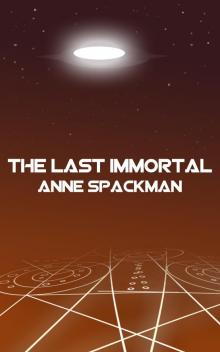 The Last Immortal : Book One of Seeds of a Fallen Empire
The Last Immortal : Book One of Seeds of a Fallen Empire Star Gods: Book Four of Seeds of a Fallen Empire
Star Gods: Book Four of Seeds of a Fallen Empire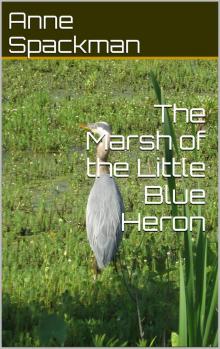 The Marsh of the Little Blue Heron
The Marsh of the Little Blue Heron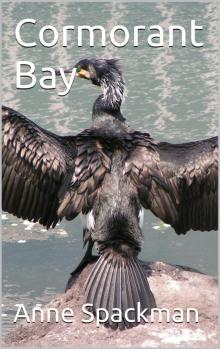 Cormorant Bay
Cormorant Bay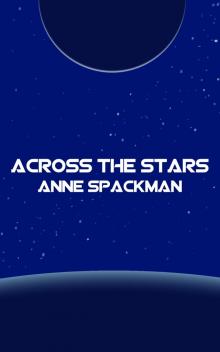 Across the Stars: Book Three of Seeds of a Fallen Empire
Across the Stars: Book Three of Seeds of a Fallen Empire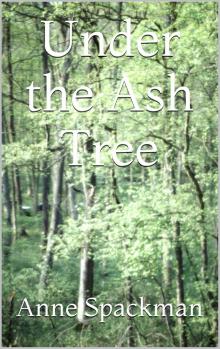 Under the Ash Tree
Under the Ash Tree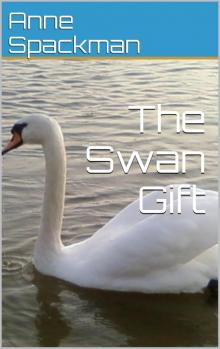 The Swan Gift
The Swan Gift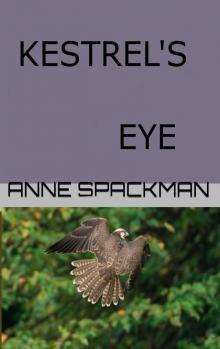 Kestrel's Eye
Kestrel's Eye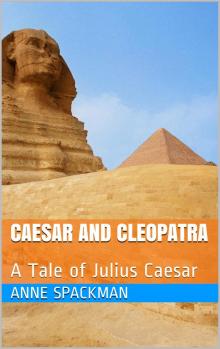 Caesar and Cleopatra: A Tale of Julius Caesar
Caesar and Cleopatra: A Tale of Julius Caesar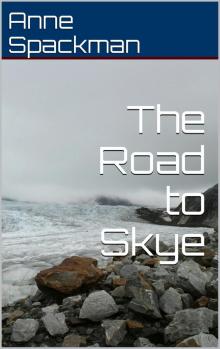 The Road to Skye
The Road to Skye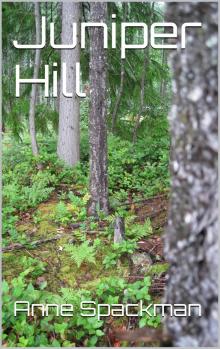 Juniper Hill
Juniper Hill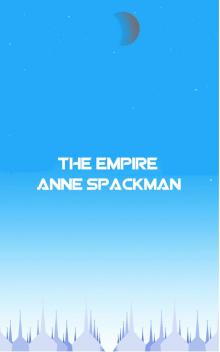 The Empire: Book Six of Seeds of a Fallen Empire
The Empire: Book Six of Seeds of a Fallen Empire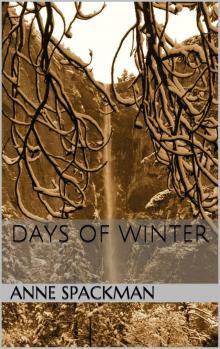 Days of Winter
Days of Winter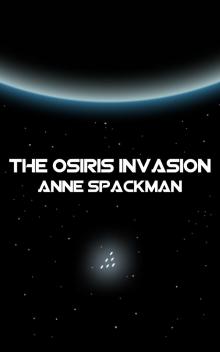 The Osiris Invasion: Book Two of Seeds of a Fallen Empire
The Osiris Invasion: Book Two of Seeds of a Fallen Empire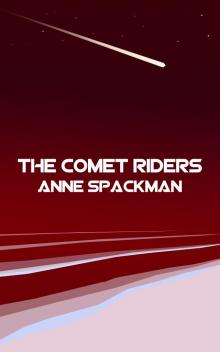 The Comet Riders: Book Five of Seeds of a Fallen Empire
The Comet Riders: Book Five of Seeds of a Fallen Empire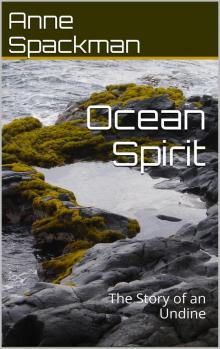 Ocean Spirit : The Story of an Undine
Ocean Spirit : The Story of an Undine What Emma Left Behind
What Emma Left Behind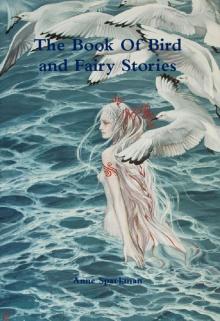 The Book of Bird and Fairy Stories
The Book of Bird and Fairy Stories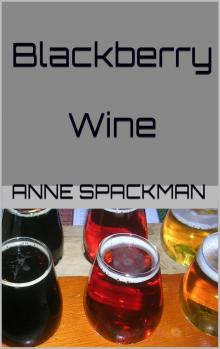 Blackberry Wine
Blackberry Wine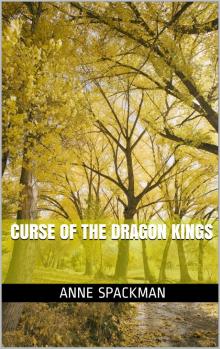 Curse of the Dragon Kings
Curse of the Dragon Kings